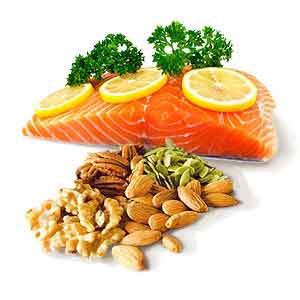FERDINAND HODLER
ELECTIVE AFFINITIES FROM KLIMT TO SCHIELE – With an Idea about Death – By Francesco Carelli From Wien, Leopold Museum
The Leopold Museum is presenting the most comprehensive retrospective of the oeuvre of Ferdinand Hodler (1853–1918) since the Swiss artist’s resounding success and international breakthrough at the 1904 exhibition at the Vienna Secession. Featuring loans from 26 institutions and various private collections in Switzerland as well as from further museums and collections in Germany, France and Liechtenstein, the presentation curated by Hans-Peter Wipplinger affords exciting insights into Hodler’s main themes over an exhibition space of more than 1,000 square meters.
In keeping with the exhibition’s subtitle Elective Affinities from Klimt to Schiele, the focus is widened to include Hodler’s influence on artists of Viennese Modernism: an exponent of Symbolism and Jugendstil, a pioneer of Expressionism and not least an innovator of monumental painting, the Swiss painter was an important inspiration to Gustav Klimt (1862–1918), Koloman Moser (1868–1918), Albin Egger-Lienz (1868–1926), Oskar Kokoschka (1886–1980) and Egon Schiele (1890–1918), as is impressively illustrated by 30 select works.
“‘Vive Vienne. Vive la Secession’ – this was the euphoric greeting formulated by the Swiss artist Ferdinand Hodler (1853–1918) in October 1903 in a postcard to the artist and co-founder of the Vienna Secession Carl Moll (1861–1945). Vienna – the innovative metropolis of art and culture in the heart of Europe around 1900 – afforded Hodler his ultimate international breakthrough. It was here that he felt ‘celebrated’ and received the recognition he had previously been denied in his own country.”
The exhibition comprises some 100 paintings and more than 50 works on paper from all the periods of Ferdinand Hodler’s oeuvre, starting with a Self-Portrait from 1873 and concluding with the landscape Lake Geneva with Mont Blanc and Pink Clouds created by the artist two months prior to his death. The self-portraits, which served Hodler as a medium of self-reflection and self-affirmation all his life, are presented alongside the group of initially naturalistic, later formally stylized and finally increasingly abstract landscapes. In them, Hodler expressed “the eternal element of nature, the beauty”, and thus created works which are among the most eminent examples of modern landscape painting ever created. The exhibition also features a selection of important portraits. Striking examples include the painting
The Convalescent (c. 1880), which is full of nuances and still in keeping with the early realism of the 1880s, the ornamental Portrait of Kathe von Bach, created in 1904 in the garden of Leesdorf Castle in Baden near Vienna, as well as one of the rare full-length likenesses, the Portrait of Gertrud Müller (1911), which captivates with its elegant lines and refined coloring. They illustrate how Hodler increasingly saw this genre as an experimental synergy of form, color and expression. Also occupying an important place in Hodler’s oeuvre are his Symbolist figural compositions which are represented in the exhibition with eminent examples, including the monumental paintings William Tell (1896/97), The Truth (1903), Sensation III (c. 1905) and A View to Infinity (1913–1916).
Characterized by clear contours, an ornamental symmetrical-rhythmical composition and designed to be most effective when viewed from a distance, these paintings impressively illustrate Hodler’s monumental linear and planar art, for which he was celebrated by his contemporaries as a modernist painter.
A special place in Hodler’s oeuvre is occupied by the cycle which chronicles the suffering of his long-term lover Valentine Gode-Darel (1873–1915). In emphatic paintings, numerous drawings as well as a bust, Hodler comprehensively documented the process of dying in a manner that is unprecedented in art history.
Additionally, personal objects owned by the artist, such as painting utensils and musical instruments, numerous historical photographs – for instance by Friedrich Viktor Spitzer (1854–1922) and Gertrud Dubi-Muller (1888–1980) – as well as written documents afford interesting and diverting insights into the artist’s life and work, and paint a vivid picture of his times. Particularly remarkable in this context is the invitation sent by Klimt to Hodler in 1897 to participate in the 1st Exhibition of the Union of Austrian Artists as well as a letter, which has only recently surfaced in a Viennese antiquarian bookshop and was acquired by the Leopold Museum, written by Hodler to Franz Servaes in 1904, in which the artist elucidated his artistic principle of “parallelism”.
“This is how death approaches us; every second of our life is a beautiful and tranquil movement and countermovement. If you accept death into your conscience, your will – that is how great works are created! And you have only the one life to achieve something. This is what structures our whole life and what gives it a completely different rhythm! Knowing this transforms the thought of death into an enormous power.”
Following the outbreak of World War I, Hodler signs a letter of protest against the bombardment of Reims Cathedral by the German artillery in September 1914. As a result, he is excluded from all German artists’ associations and is heavily criticized in the press. In the winter of 1914 Hodler keeps vigil in Vevey at the bedside of his fatally ill lover Valentine Gode-Darel, who dies in 1915 and leaves behind the couple’s daughter Paulette (1913-1999). The formerly elegant Parisienne, whose portrait with plume hat exudes so much vitality that it appears to burst out of its , or whose depiction with a wreath of roses evokes the image of an icon, eventually becomes the laid out, rigid body which in its horizontality enters into infinity.
Hodler himself is suffering from severe respiratory problems which in the summer necessitate a stay at the French spa Neris-les-Bains. After his travels to France, Spain, Italy, Germany and Austria, it is the last time that Hodler leaves Switzerland.
From the autumn of 1917 his health deteriorates. Bound to his apartment on Quai du Mont-Blanc, he creates his last landscapes from his bedroom window, capturing Lake Geneva in more than 20 views in different weather- and lighting conditions, often in the early morning. On the morning of 19th May 1918 Hodler, who suffered from a lung disease, dies at the age of 65 in his apartment in Geneva.
“In his late oeuvre, which is commonly dated to coincide with the painful experiences surrounding the death of Valentine Godé-Darel in 1914/15, Hodler strove towards an increasing simplification and unification especially in his lake views: ‘The closer I get to the great unity, the more I want my art to become simple and great.’”




